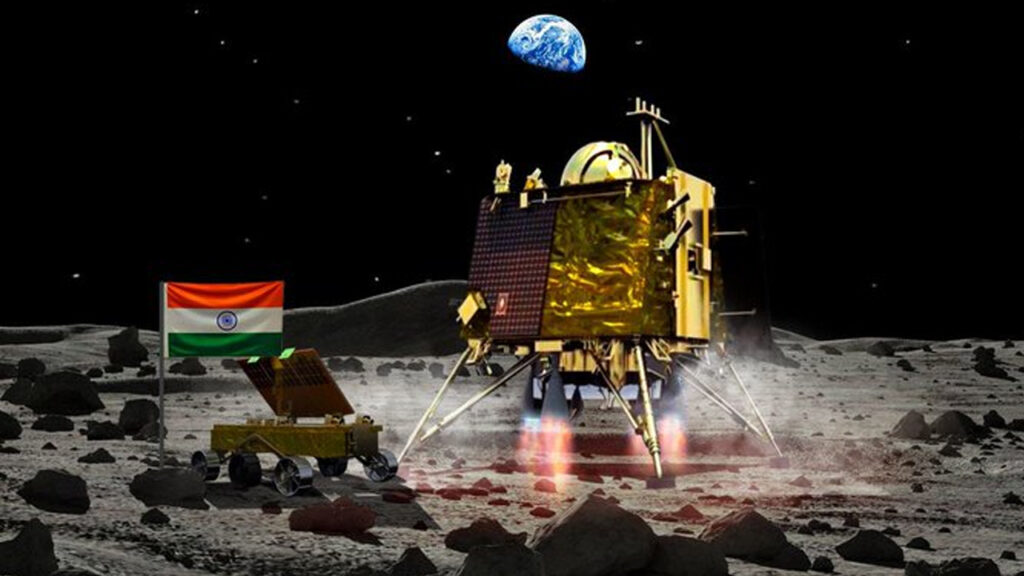
Chandrayaan-3 has successfully soft-landed on the moon
In the realm of space exploration, India has made remarkable strides with its Chandrayaan missions. After the successful Chandrayaan-1 and Chandrayaan-2 missions, the Indian Space Research Organisation (ISRO) is gearing up for its next lunar venture: Chandrayaan-3. This ambitious mission aims to build upon the knowledge gained from its predecessors and further advance India’s presence in space exploration.
Chandrayaan-1, launched in 2008, was India’s first lunar mission. It made significant contributions, most notably the discovery of water molecules on the lunar surface. Building upon this success, Chandrayaan-2, launched in 2019, aimed to explore the Moon’s south polar region. While the orbiter successfully reached lunar orbit and continues to provide valuable data, the lander failed to make a soft landing.

Chandrayaan-3 Mission Objectives:
Chandrayaan-3 is designed with specific objectives in mind:
- Successful Soft Landing: The primary goal of Chandrayaan-3 is to achieve a successful soft landing on the Moon’s surface. Learning from the challenges faced by Chandrayaan-2’s lander, Vikram, ISRO is implementing design improvements to increase the chances of a safe landing.
- Enhanced Payload: Chandrayaan-3 will carry a suite of scientific instruments and equipment to further study the Moon’s surface, composition, and environment. This includes instruments to analyze the lunar soil and rocks, study the presence of water molecules, and gather data on the Moon’s exosphere.
- International Collaboration: ISRO is open to collaborating with other space agencies and institutions to enhance the scientific output of Chandrayaan-3. Collaborative efforts can lead to shared expertise, reduced costs, and increased mission success.
Mission Details: Chandrayaan-3 is expected to consist of the following components:
- Lander: The lander will be responsible for the final descent and soft landing on the lunar surface. It will carry scientific payloads to conduct experiments and gather data.
- Rover: A rover might be included in the mission to explore the lunar surface in close proximity to the landing site. The rover would be equipped with tools and instruments to analyze the terrain and gather samples.
- Orbiter: While Chandrayaan-3’s primary focus is the lander and rover, it might also include an orbiter component. This orbiter would serve as a communication relay between Earth and the lander/rover on the Moon.
Challenges and Future Prospects: Soft landing on the Moon remains a complex and challenging task, as evidenced by the experiences of various space agencies. Chandrayaan-3’s success will hinge on the lessons learned from Chandrayaan-2’s landing attempt and the effective implementation of design improvements.

The success of Chandrayaan-3 could pave the way for more ambitious lunar missions, potentially including crewed missions, lunar habitats, and deeper scientific exploration.
Conclusion: Chandrayaan-3 represents India’s unwavering commitment to space exploration and scientific advancement. By addressing the challenges faced by its predecessors and building on their achievements, ISRO aims to demonstrate India’s capabilities in landing on the Moon and conducting advanced scientific research. As the mission progresses, the world will eagerly anticipate the results and discoveries that Chandrayaan-3 will undoubtedly bring forth.